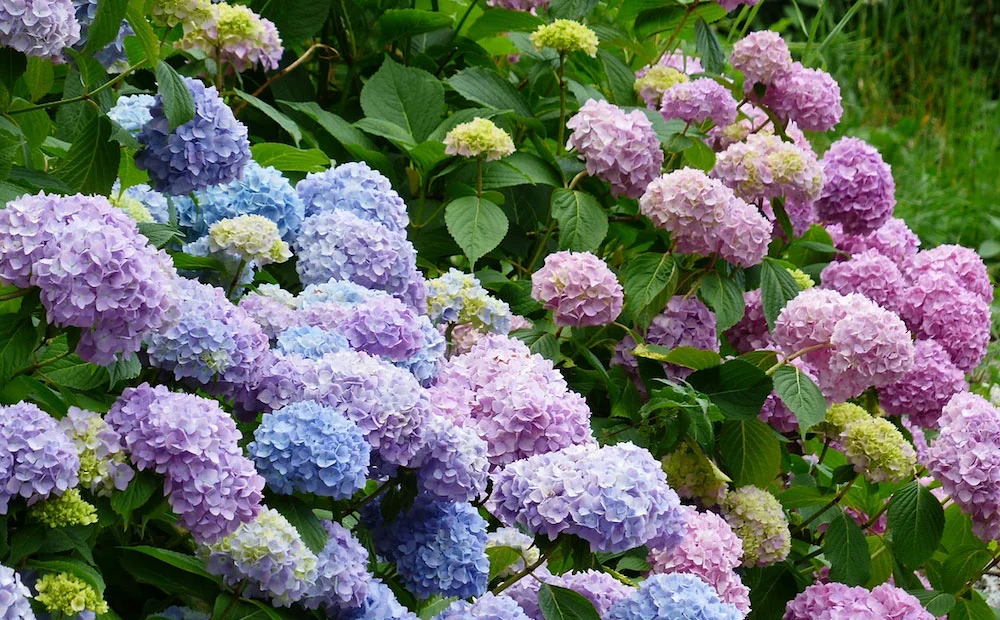Ah, hydrangeas – the showstoppers of the garden! Bursting with lush blooms ranging from dreamy blues to vibrant pinks, these flowers are not just plants; they’re a statement. Revered for their voluminous, eye-catching flowers, hydrangeas are the heartthrobs of gardens everywhere. They don’t just capture the eye; they tell a story with every bloom. Whether nestled in quaint cottage gardens or gracing elegant landscapes, hydrangeas have a way of turning any space into a living masterpiece. Let’s dive into the world of these botanical beauties and discover how to make them shine even brighter.
Companion Planting 101: The Hydrangea Edition
Planting other flowers and plants with hydrangeas isn’t just about making things look pretty – it’s a smart move for a healthier garden. These lovely flowers do best when they’re surrounded by the right plant friends, creating a garden where everything works together. Picking the best companions planting for hydrangeas means thinking about things like light, soil, and how much water they need. The goal? To make the garden look amazing and help everything grow well. From the subtle leaves of hostas to the bright blooms of azaleas, each companion plays a part in making the hydrangeas look their best while helping the whole garden thrive. Let’s find the perfect partners for your hydrangea haven.
Top Plant Partners for Hydrangeas
Hostas: The Leafy Legends
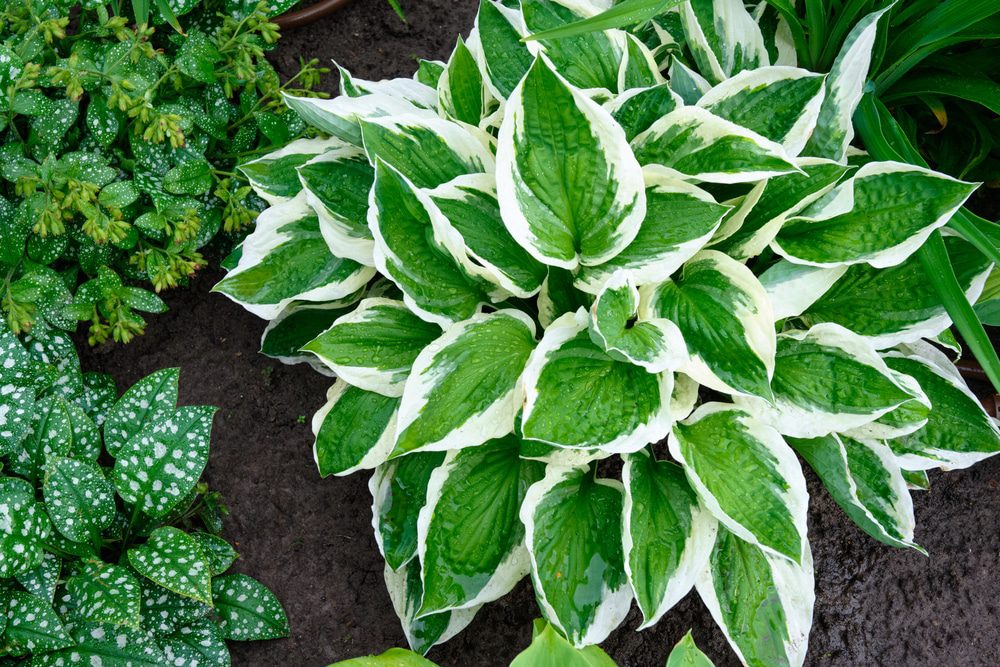
Why hostas? Hostas are the unsung heroes in the hydrangea companion story. Their broad, lush leaves provide a stunning contrast to the delicate blooms of hydrangeas, adding depth and texture to the garden. These leafy legends are remarkably hardy and shade-tolerant, making them an excellent choice for filling in those understory areas. Plus, their variety in color and size offers endless possibilities for creative garden designs alongside hydrangeas.
Ferns: Frond-tastic Friends
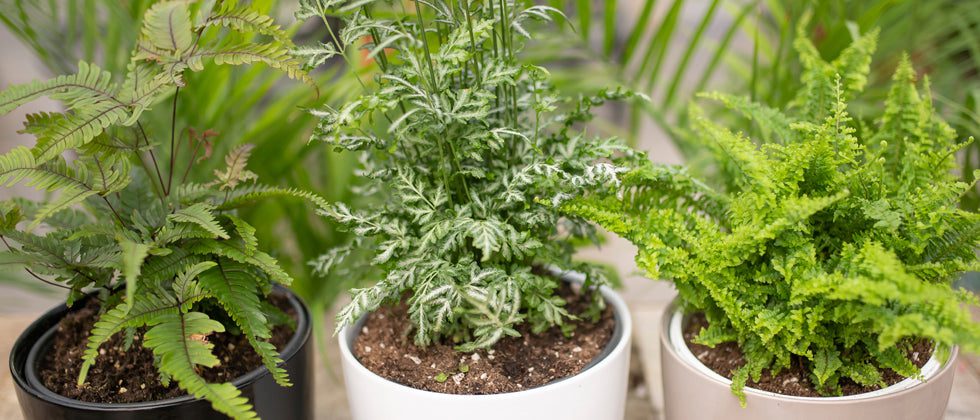
Ferns, with their gracefully arching fronds, are the perfect understory companions for hydrangeas. These frond-tastic friends bring a touch of woodland charm, complementing the lushness of hydrangeas with their delicate, green textures. Ideal for filling in gaps and creating a layered garden look, ferns thrive in similar shady conditions as hydrangeas. They add a sense of movement and an almost ethereal quality to the garden, enhancing the visual appeal. Their low-maintenance nature and diverse varieties make them a practical yet enchanting choice for gardeners looking to create a serene and naturally cohesive space.
Azaleas: Flower Power Partners
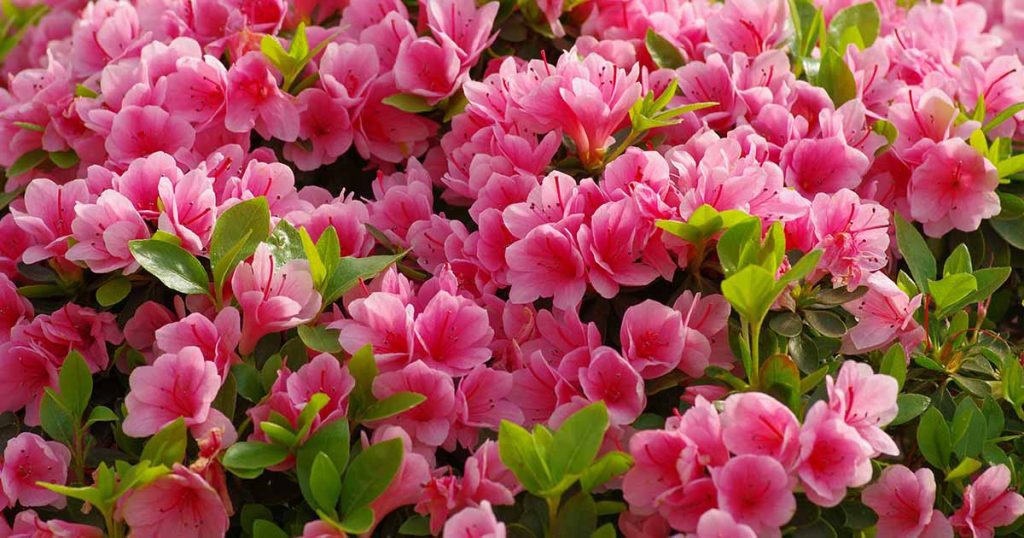
Azaleas are the dynamic flower power partners of hydrangeas. With their bright, show-stopping blooms, they create a dazzling floral display when paired with the softer colors of hydrangeas. Blooming at the same time, they offer a stunning spring spectacle. Azaleas also like the same acidic soil as hydrangeas, making them a perfect match. This partnership not only gives the garden more colors but also brings a lively, vibrant energy to any hydrangea arrangement.
Boxwood: The Structured Sidekick
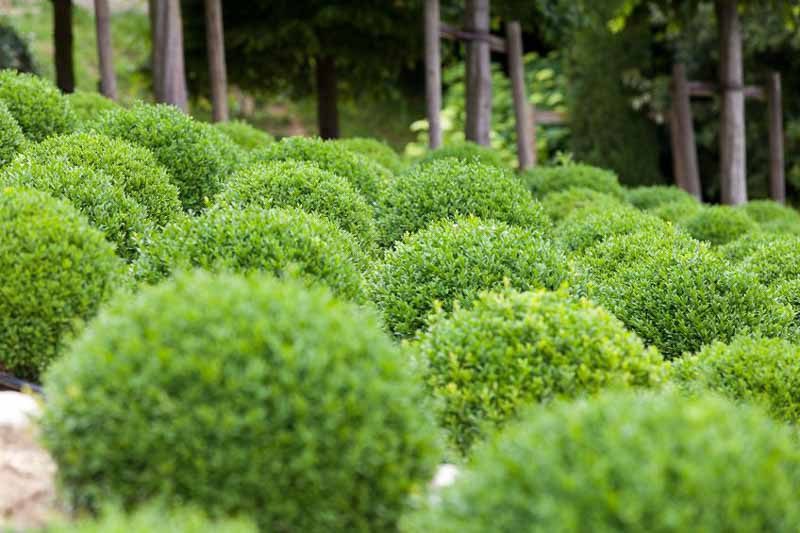
Boxwood shrubs are the structured sidekicks to the more free-form hydrangeas. Their dense, evergreen leaves provide a year-round backdrop, offering contrast in texture and shape. Perfect for adding structure to the garden, boxwoods can be trimmed into neat hedges or left in their natural state for a more relaxed look. They’re tough and can adapt to different conditions, making them an excellent choice for framing and highlighting the softer, fluffy hydrangeas.
Lavender: A Scent-sational Companion
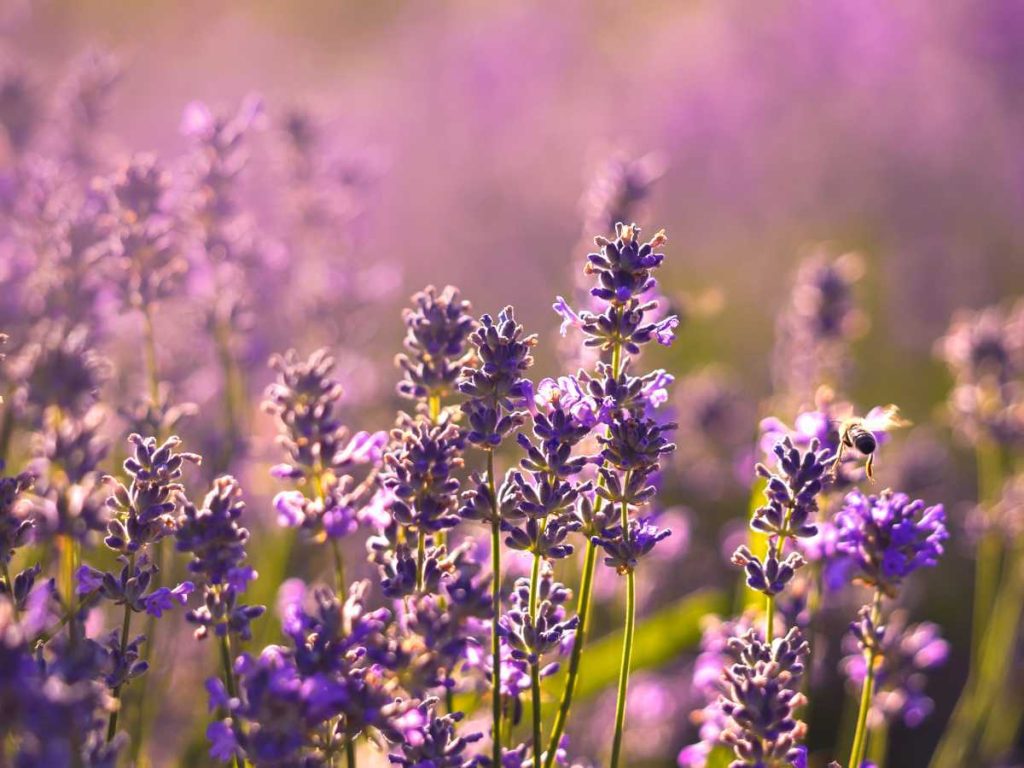
Lavender, with its enchanting fragrance and delicate purple blooms, is a scent-sational companion for hydrangeas. This aromatic herb adds a sensory dimension to the garden, attracting pollinators and boosting overall biodiversity. Lavender’s slender, upright stems and silvery-green foliage provide a striking textural contrast to the lush, rounded forms of hydrangeas. Thriving in well-drained soil and full sun, lavender can handle drier conditions, complementing the moisture-loving hydrangeas by encouraging a balanced garden ecosystem. Its enduring appeal throughout the seasons makes it an ideal partner for creating a multi-sensory garden experience.
Rhododendrons
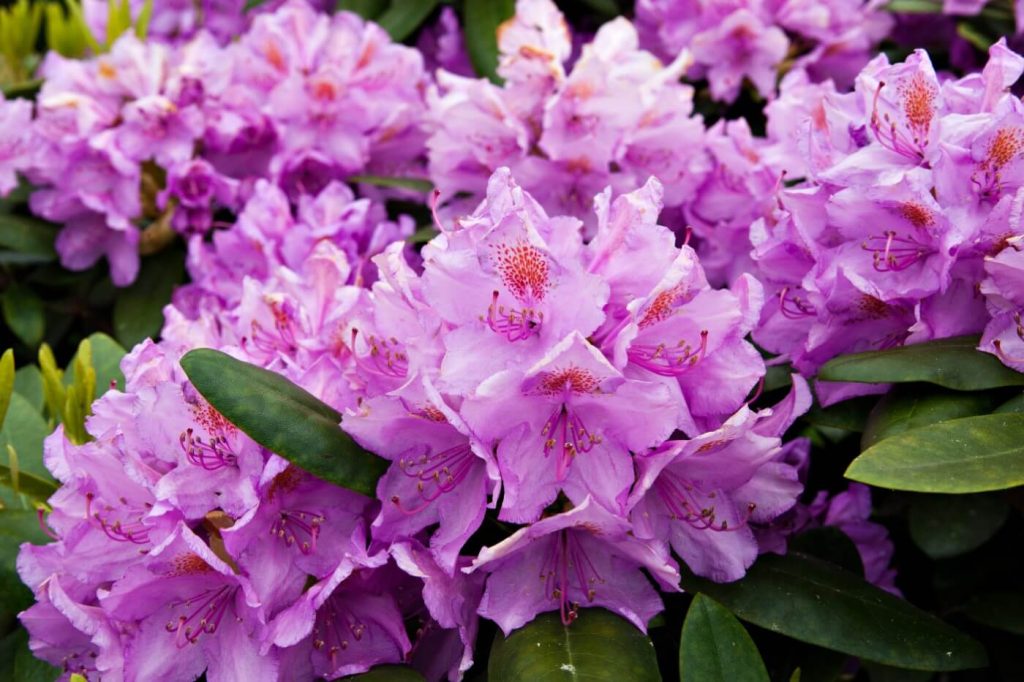
Rhododendrons are fantastic companions for hydrangeas, sharing a love for slightly acidic soil. They offer a lush, evergreen presence and boast spectacular blooms that complement the hydrangea’s grandeur. Their ability to thrive in similar light conditions as hydrangeas makes them a harmonious choice. Rhododendrons add year-round interest to the garden, with their vibrant spring flowers and dense, green foliage, creating a visually appealing and cohesive planting scheme
Japanese Maples
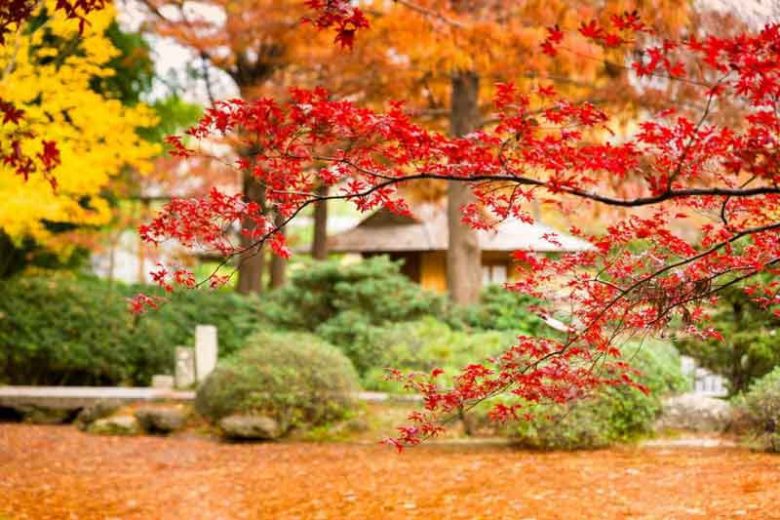
Japanese Maples are a magnificent choice for pairing with hydrangeas. Their delicate, finely cut leaves and striking seasonal color changes offer a dramatic contrast to the broad, lush leaves and large blooms of hydrangeas. Thriving in similar semi-shaded conditions, they bring a touch of elegance and height to the garden. The unique form and color palette of Japanese Maples enhance the visual appeal and depth of a hydrangea-centric landscape.
Daffodils
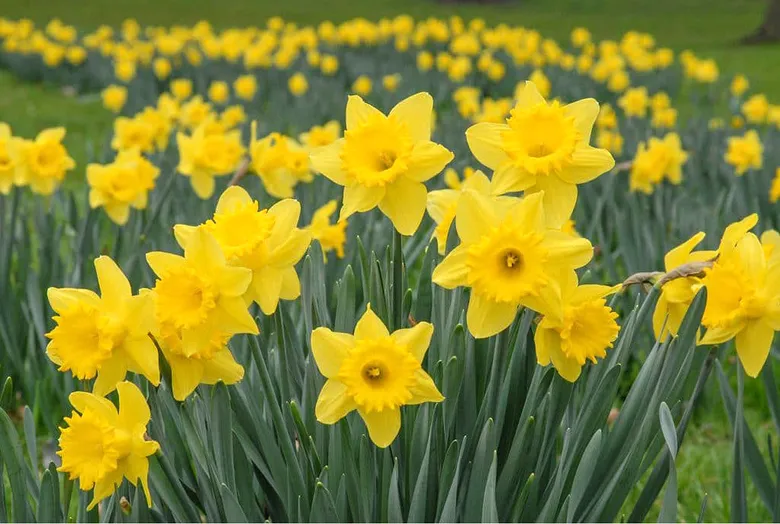
Daffodils are excellent early-spring companions for hydrangeas. Their bright, cheerful blooms provide an uplifting splash of color before hydrangeas begin their show. These bulbous plants are easy to grow and add a burst of yellow or white, complementing the emerging foliage of hydrangeas. Their ability to naturalize in the garden ensures a recurring delight every spring, creating a delightful contrast and adding seasonal interest to the hydrangea beds.
Columbines
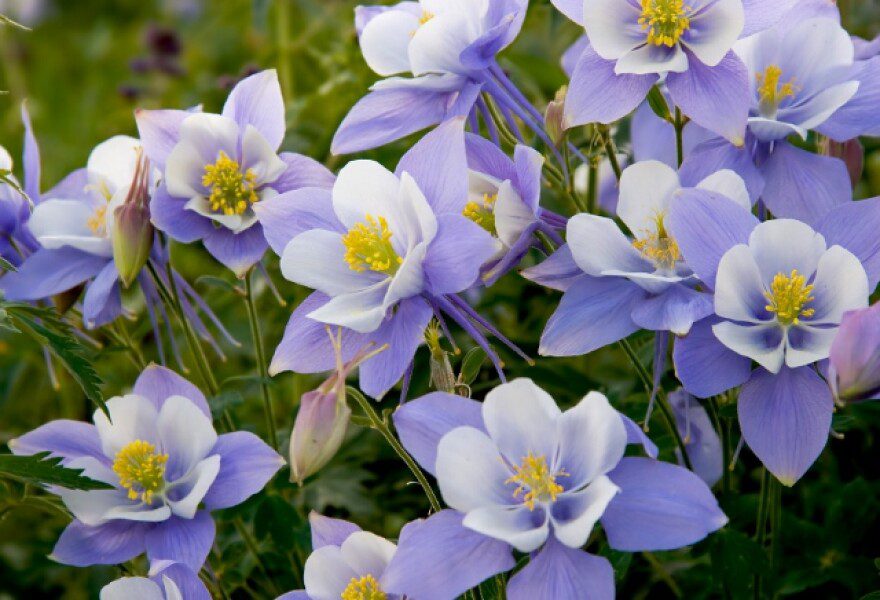
Columbines are enchanting companions for hydrangeas, bringing a whimsical charm to the garden. With their unique, delicate flowers and soft, fern-like foliage, they offer a striking contrast in texture and form. Blooming in late spring, columbines provide an elegant transition as hydrangeas start to flourish. They thrive in similar light conditions and add a touch of fairy-tale allure, enhancing the diversity and aesthetic appeal of a hydrangea-centric garden design.
Salvias
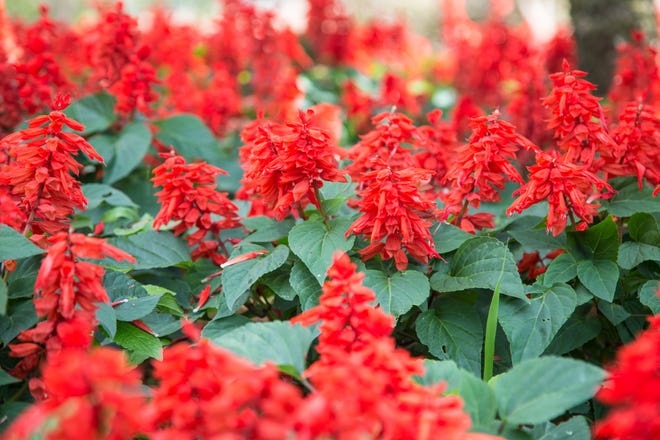
Alvias, with their vibrant spikes of flowers, are a dynamic addition to the hydrangea garden. These hardy perennials introduce a vertical element with their upright growth habit, contrasting beautifully with the round, voluminous shape of hydrangea blooms. Available in a range of colors, salvias can complement or contrast with hydrangeas, depending on the chosen variety. They are particularly valued for their ability to attract pollinators like bees and butterflies, adding life and movement to the garden. Salvias thrive in similar conditions as hydrangeas, preferring well-drained soil and partial sun, making them an excellent choice for creating a lively, multi-dimensional garden display.
Designing Your Garden
| Element | Description | Examples |
|---|---|---|
| Color Harmony | Choose plants with complementary or contrasting colors to hydrangeas for visual impact. | Lavender (contrasting), Azaleas (complementary) |
| Texture Variety | Mix plants with different textures to add depth. Smooth hydrangea blooms pair well with plants having varied leaf structures. | Ferns (delicate texture), Hostas (broad leaves) |
| Height Variation | Layer plants of different heights to create a dynamic, three-dimensional effect. | Low-growing Lavender, Taller Azaleas |
| Seasonal Interest | Select plants that offer visual interest across different seasons for a garden that’s engaging year-round. | Evergreen Boxwood (winter), Hydrangeas (spring/summer) |
| Balance & Rhythm | Arrange plants in a way that guides the eye through the garden, creating a sense of balance and rhythm. | Repetition of Hostas, Symmetrical Boxwood placements |
| Focal Points | Use some plants to create focal points that draw attention to certain areas of the garden. | Hydrangeas as central focus, Accented by Azaleas |
| Space Utilization | Consider the space each plant needs to grow and thrive, ensuring they’re not overcrowded and have room to showcase their beauty. | Adequate spacing between Hydrangeas and companion plants |
| Soil Consideration | Match plants with similar soil preferences to ensure a harmonious growth environment. | Acidic soil lovers like Hydrangeas and Azaleas together |
| Watering Needs | Group plants with similar watering requirements to make maintenance more manageable and efficient. | Lavender in drier spots, Hydrangeas in moister areas |
| Wildlife Attraction | Include plants that attract beneficial wildlife like pollinators and birds, which can help the garden ecosystem. | Lavender for bees, Ferns providing bird shelter |
Caring for Your Hydrangea Companions: Tips and Tricks
- Understand Light Requirements:
- Most hydrangea companions like hostas and ferns prefer partial to full shade. Make sure they are planted in a spot that gives them the light they need.
- Soil Preparation:
- Most companions do best in soil that drains well. Add organic matter to the soil to improve drainage and nutrients.
- Watering Wisely:
- Hydrangeas and their companions usually need regular moisture. But don’t overwater, as plants like lavender like drier conditions.
- Mulching Matters:
- Put a layer of mulch around the plants to help keep moisture in the soil and control temperature. This is especially good for plants that love moisture.
- Pruning and Deadheading:
- Regularly prune and deadhead where needed to encourage growth and flowering. For example, trim back lavender after blooming to keep its shape and size.
- Fertilizing for Health:
- Use a balanced fertilizer in the spring to give your plants a nutrient boost. Keep in mind each plant’s specific needs.
- Pest and Disease Management:
- Watch for pests and diseases. Treat problems quickly, using organic or chemical controls based on your gardening style.
- Spacing for Air Circulation:
- Make sure there’s enough space between plants to promote good air circulation, reducing the risk of fungal diseases.
- Winter Care for Perennials:
- Protect perennials like hydrangeas and boxwood in winter with enough mulch and, if needed, covers to shield them from harsh weather.
- Regular Check-ups:
- Check on the overall health of your plants regularly. Look for signs of stress and address issues like nutrient deficiencies or water problems right away.
Pros and Cons
| Companion Plant | Pros | Cons |
|---|---|---|
| Hostas | – Provide lush, contrasting foliage. – Shade-tolerant, ideal for underplanting. – Low maintenance. | – Susceptible to slugs and snails. – Prefer more shade than some hydrangea varieties. |
| Ferns | – Add a delicate, woodland texture. – Thrive in similar shady conditions. – Low maintenance. | – Can be invasive in optimal conditions. – Some varieties are sensitive to cold. |
| Azaleas | – Offer vibrant, complementary blooms. – Share similar acidic soil needs. – Evergreen varieties provide year-round interest. | – Require more acidic soil. – Prone to specific pests and diseases. |
| Boxwood | – Provide structured, evergreen backdrop. – Great for formal garden designs. – Hardy and versatile. | – Can suffer from box blight and other diseases. – Requires regular pruning to maintain shape. |
| Lavender | – Attracts pollinators with it’s scent. – Offers beautiful color contrast. – Drought-tolerant. | – Needs well-drained soil, different from hydrangeas. – May not thrive in very cold or very wet conditions. |
FAQs
While hydrangeas are friendly, they don’t really like sharing their space with veggies. It’s not personal, just what they prefer!
It depends on the plant, but generally, they like a drink when the soil feels dry. Just don’t turn your garden into a swamp.
No, but imagine if they did! Hydrangeas change color based on soil pH, not their neighbors.
Conclusion
Pairing hydrangeas with the right companions turns your garden into a stunning mix of colors, textures, and scents. Each plant, from the subtle beauty of hostas to the bright drama of azaleas, plays an important role in creating a garden that works together and looks amazing. While there are challenges like different care needs and growing conditions, the beauty and variety these combinations bring are totally worth it. Have fun trying out these pairings and watch as your garden turns into a living work of art, a true reflection of your creativity and love for nature.


